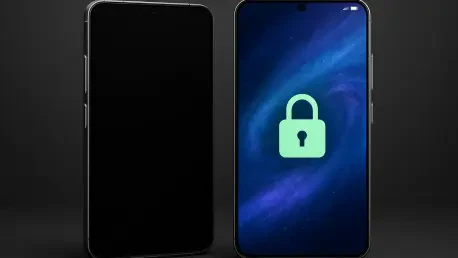I’m thrilled to sit down with Oscar Vail, a renowned technology expert whose insights into quantum computing, robotics, and open-source projects have shaped the conversation around emerging tech. With a finger on the pulse of smartphone innovation, Oscar is the perfect person to unpack the latest rumors surrounding the Galaxy S26 Ultra, particularly its groundbreaking Flex Magic Pixel feature. Today, we’ll dive into the significance of privacy-focused display technology, Samsung’s legacy of screen advancements, and how this new feature could redefine the competitive landscape of flagship devices.
How does the rumored Flex Magic Pixel feature on the Galaxy S26 Ultra work at a hardware level, and what sets it apart from traditional privacy solutions?
At its core, the Flex Magic Pixel feature is a hardware-based privacy screen integrated directly into the display of the Galaxy S26 Ultra. Unlike traditional privacy screen protectors, which are external films that limit viewing angles, this technology manipulates the display’s pixel output or light direction to narrow the visible angle when activated. It’s a sophisticated approach that doesn’t compromise brightness or color accuracy the way physical protectors often do. What makes it unique is that it’s built into the screen itself, so there’s no need for additional accessories, and it can be toggled on or off with a simple tap, offering flexibility that traditional solutions just can’t match.
Why do you believe a privacy-focused display feature like this is becoming so crucial for smartphone users today?
Privacy is a growing concern in our hyper-connected world. With more people working remotely or using their devices in public spaces like cafes or transit, the risk of sensitive information being glimpsed by prying eyes is real. A feature like Flex Magic Pixel addresses this head-on by giving users control over who can see their screen. It’s especially valuable for professionals handling confidential documents, or even everyday users who want to keep their messages or videos private while commuting. It’s not just a tech gimmick—it’s a practical tool that enhances security in real-world scenarios.
Samsung has a strong track record with display innovations. How does Flex Magic Pixel build on their past achievements in this area?
Samsung has been pushing the envelope on displays for years, from introducing anti-reflective coatings with the S21 Ultra to pioneering Corning’s Gorilla Armor on the S24 Ultra, which drastically cut down reflections while boosting durability. Flex Magic Pixel feels like a natural evolution of that legacy. While earlier advancements focused on clarity and toughness, this feature prioritizes functionality by adapting the display to user needs. It’s a shift from purely visual improvements to interactive, situation-based technology, showing Samsung’s knack for layering new ideas on top of a solid foundation.
There’s talk that specs like peak brightness have hit a point of diminishing returns. What’s your take on this, and where should smartphone makers focus their efforts instead?
I agree that we’re at a stage where raw numbers—like hitting 3,000 nits of brightness—don’t mean as much as they used to. Most users won’t notice the difference between 2,500 and 3,000 nits in everyday use, especially since factors like reflectivity play a bigger role in visibility. Instead of chasing incremental spec boosts, manufacturers should pivot to innovations that tangibly improve user experience, like Flex Magic Pixel. Features that address real pain points—privacy, usability in diverse environments, or even better power efficiency for displays—are where the industry can make a meaningful impact.
Given some frustration over Samsung’s pace of innovation in recent years, do you think the S26 Ultra’s new feature is enough to reignite excitement among users?
I think Flex Magic Pixel is a step in the right direction. It’s not just another spec bump; it’s a feature that users will notice and appreciate every time they’re in a public setting. That kind of practical innovation can definitely spark excitement, especially for those who’ve felt Samsung’s upgrades have been too incremental. That said, there are still areas like battery capacity—stuck at 5,000 mAh for years—or more creative use of the S Pen where Samsung could push harder. But as a flagship feature, this privacy tech feels fresh and relevant.
How do you see Flex Magic Pixel positioning Samsung against competitors in the crowded flagship market?
This feature could give Samsung a distinct edge, especially since no other major smartphone brand has rolled out a comparable hardware-level privacy display yet. While some competitors might be experimenting in labs, Samsung seems poised to bring it to market first with the S26 Ultra. For users prioritizing privacy—or just looking for something new and different—this could be a deciding factor over another brand’s flagship, especially if paired with Samsung’s already stellar display and camera strengths. It’s a unique selling point in a sea of similar specs.
Looking ahead, what’s your forecast for the future of display technologies in smartphones?
I’m optimistic that we’ll see displays become even more adaptive and context-aware. Beyond privacy features like Flex Magic Pixel, I expect innovations in energy efficiency, where screens dynamically adjust power use based on content or ambient light without sacrificing quality. We might also see more integration of health-focused tech, like blue light reduction that adapts to time of day, or even displays that double as sensors for touchless gestures. The future isn’t just about prettier screens—it’s about smarter ones that enhance how we interact with our devices in every aspect of life.









